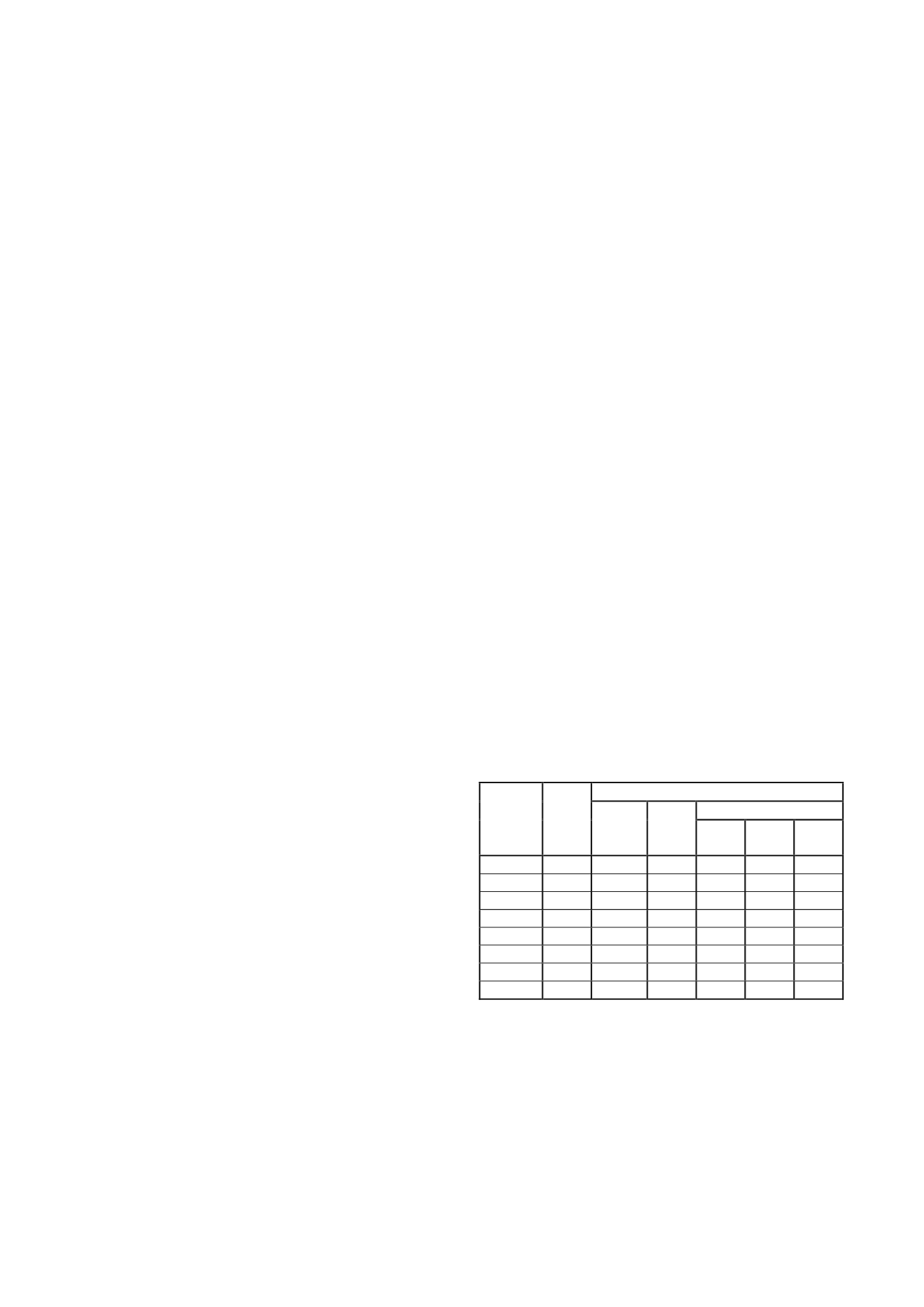
287
Proceedings of the 18
th
International Conference on Soil Mechanics and Geotechnical Engineering, Paris 2013
1
Special Features of Creep of Clayey Soils
Particularités du fluage des sols argileux
Zhakulin A.S., Zhakulina A.A., Orazaly E.E.
Karaganda State Technical University, Karaganda, Kazakhstan
Orazalin Z.Y.
Massachusetts Institute of Technology, Cambridge, USA
ABSTRACT: The problem of settlement predictions in clays involves the solution of complex engineering challenges associated with
the determination of many experimental parameters (modulus of deformation, lateral expansion ratio, coefficients of permeability and
consolidation, as well as rheological characteristics). The full analysis of ground behavior during consolidation and creep of the solid
soil particles at the time of the construction and operation is only possible if the site investigation and laboratory results are reliable. In
this paper the authors present the results of the long-term settlement observations (over 50 years) of large industrial facilities of
Karaganda Metallurgical Complex and the soil properties of these sites based on the thorough site investigation program. The
underlying soils have sufficient bearing capacity, relatively high values of density and low void ratios. The creep deformations at the
constant loads in the saturated state exhibited gradually decreasing character. The actual settlements of the structures and the
maximum allowable settlements (by the building codes) are compared. The conclusion is made on the need to amend the recognized
formula given by the building codes for the ground analysis by the second group of limiting states.
RÉSUMÉ : Le problème de la prédiction de la base de sédiments est réduite à la résolution des problèmes d’ingénierie complexes
associés à la détermination des paramètres expérimentaux (module de déformation, le coefficient de coefficients de dilatation latéraux,
du filtre et la consolidation, de fluage et de la rhéologie caractéristiques) des sols argileux. Une analyse complète du comportement de
la base pour la consolidation et le fluage des particules solides du sol avec le temps au cours de la construction et l’exploitation n’est
possible que si les résultats expérimentaux sont fiables et exacts. Les auteurs de cet article établissent que les propriétés physiques des
sols argileux du site de construction dans l’ouest du Kazakhstan se caractérisent par une hétérogénéité et la propagation en assez
grand nombre de valeurs de caractéristiques. Les résultats des observations de règlement à long terme des grandes installations
industrielles de Karaganda Complexe Métallurgique sont présentés dans le document. Les colonies réelles des structures et les
colonies maximales admissibles (codes du bâtiment) sont comparées. La conclusion se fait sur la nécessité de modifier la formule
communément reconnue pour l’analyse du sol par le deuxième groupe d’états limitatifs.
KEYWORDS: settlements, foundations, laboratory and in-situ characterization, creep.
1 INTRODUCTION
The long-term settlements of large industrial facilities of
Karaganda Metallurgical Complex have been monitored for
more than 50 years by geodesic surveying. In order to record the
settlements, the survey points were installed during the
construction of the blast furnace, charcoal oven battery and 250
meters tall chimney structures of the complex.
It is known that the primary settlements occur during the
construction period and after several years of building
operation. The settlement stabilization in clays occurs over time.
In the central part of Kazakhstan the clayey soils (clay loam)
with mostly semi-solid consistency are dominant which turn
into a plastic state if the moisture content is increased.
In this regard, it is important to monitor the ground
deformations from the moment of foundation installation and
application of the loads, as well as to conduct the observations
of changes in soil water content and groundwater levels
(Tsytovich N.А. et al. 1967, Tsytovich N.A. and Ter-
Martirosjan Z.T. 1981, Ukhov S.B. et al. 2002.)
2 PHYSICAL - MECHANICAL PROPERTIES OF SOILS
The physical and mechanical properties of the soils underlying
the industrial facilities of Karaganda Metallurgical Complex are
presented in Table 1.
Table 1. Physical- mechanical properties of the soils
Facilities
Chimney
Properties
Units
Furnace
Oven
battery
Н=
250 м
Н=
100 м
Н=
150 м
о
kN/m
3
20,0
21,0
21,1
20,6
20,3
s
кN/m
3
26,8
27,0
27,0
26,9
27,2
%
12,5
14,2
18
19
17
J
l
0,25
0,24
0,26
0,21
0,26
е
0,52
0,76
0,49
0,66
0,52
deg.
21
24
21
22
19
с
МPа
0,08
0,06
0,06
0,08
0,06
Е
о
МPа
19,5
14,1
15,0
16,9
17,2
These geotechnical investigations and laboratory testing
results show that the soils have relatively high density and low
void ratios. The laboratory studies confirm an increase in water
content of soils and the transition from a semi-solid to a low-
plasticity consistency.
3 STRUCTURAL FEATURES OF FOUNDATIONS
The foundation of the blast furnace facilities was designed as a
monolithic mass of reinforced concrete with the plan area of
27.0 х 27.0 m. The reinforcement of the foundation consisted of
welded wire mesh made of steel class А – II. There are three


